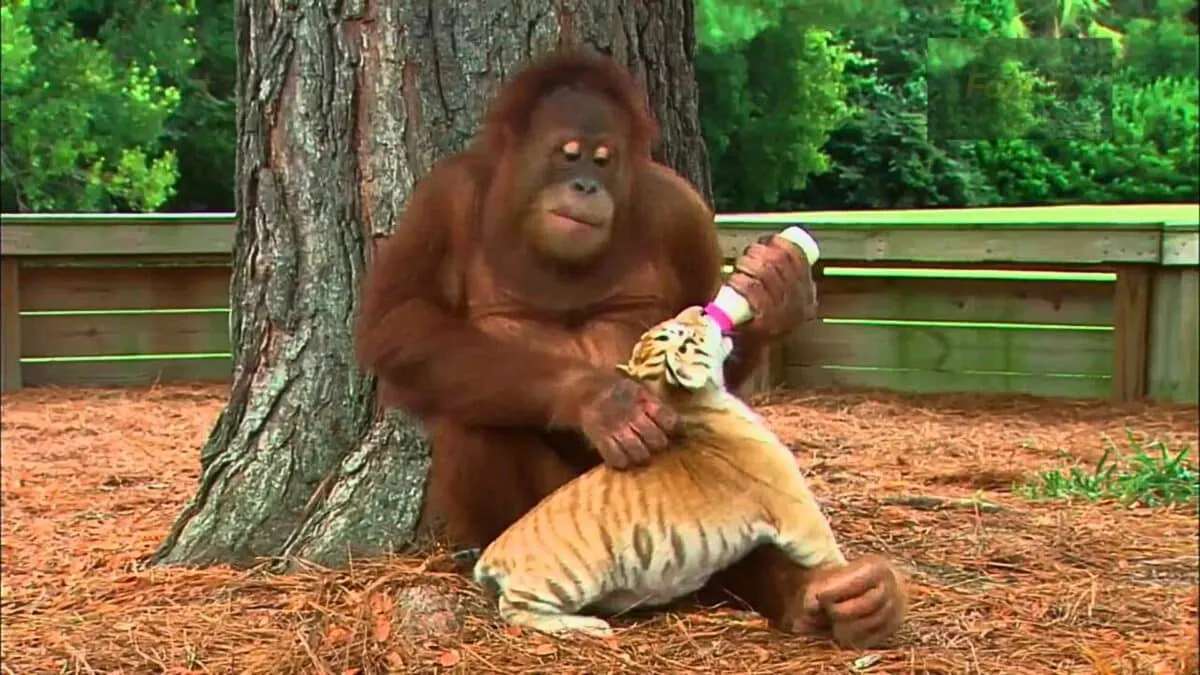
In Myrtle Beach, South Carolina, an unexpected friendship blossomed. An orangutan has taken on a surprising new role: babysitter to a few tiger cubs. But how did this even happen?
Unlikely Friends
“Orangutan Babysits Tiger Cubs,” Source: YouTube, Uploaded: AnimalsMedia.com
Size and species differences aside, the vast jungles of Asia are home to both these creatures; however, their paths seldom cross in the wild. Yet, in this unique setting, they have become inseparable. The orangutan, who watched his caregivers tending to the tiger cubs, felt an intrinsic desire to step in and help. It’s as if he thought, “Why can’t I do that too?”
The Darker Side of the Story
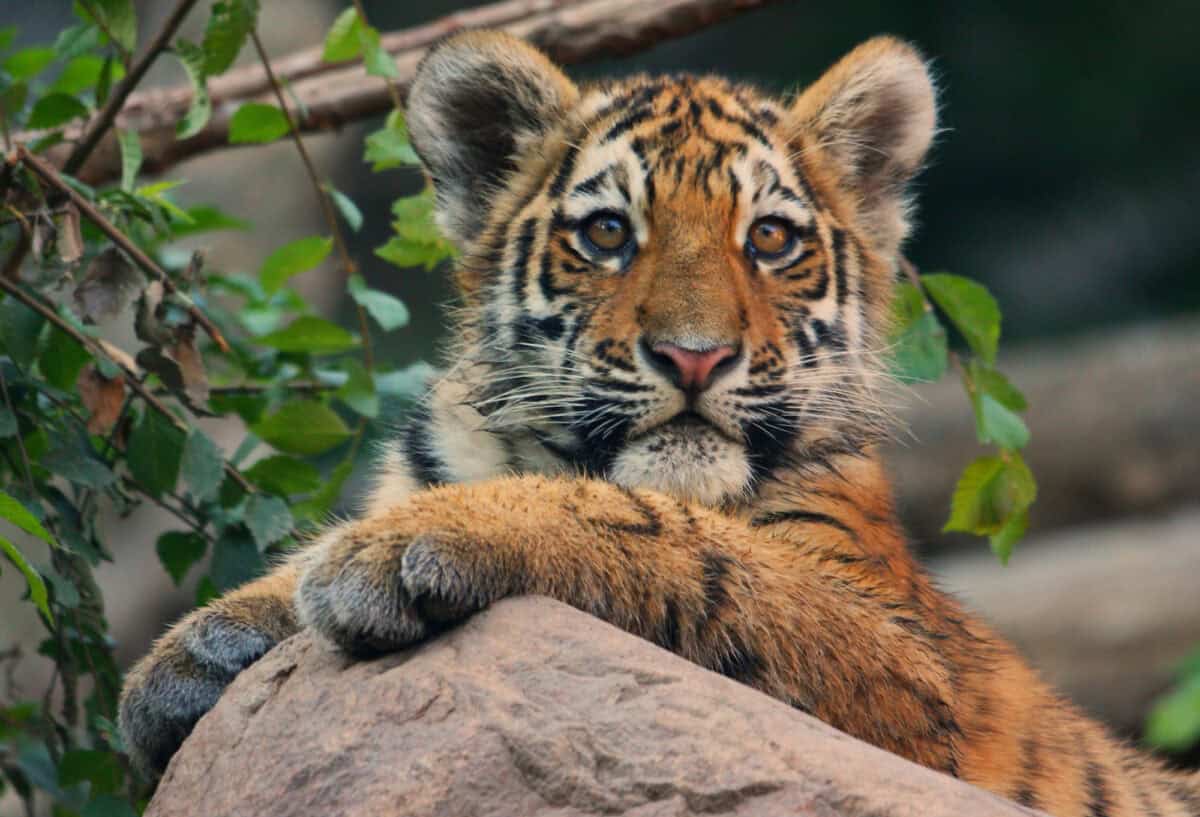
While the video of the orangutan and tiger cubs has garnered millions of views and is described as a “cuteness overload,” a more somber perspective must be addressed. At first glance, the video seems to depict a heartwarming interaction, but upon closer inspection, it raises concerns about animal exploitation. Watchdog group Eyes On Apes has criticized Myrtle Beach Safari for using the “unlikely animal friendships” narrative to exploit endangered species and misrepresent the proper care of these animals
Myrtle Beach Safari offers a “preservation station photo encounter” where participants can have hands-on experiences with a baby tiger and a young ape, with prices starting at $100 per person. One particularly concerning practice is the “training” of the tiger cubs by the apes to enjoy the bottle. This is not for the benefit of the animals but rather so that tourists can switch places with the ape for photo opportunities. While the organization claims to support wildlife conservation through its charity, Rare Species Fund, its activities have been scrutinized. Critics, including Big Cat Rescue, have reported instances where Myrtle Beach Safari donated tigers to subpar zoos under the guise of conservation.
A Plea for Awareness
 calc(100vw – 40px), 720px” data-pin-description=”Orangutan ” data-pin-title=”A Closer Examination: Orangutan Babysits Tiger Cubs” /></picture>Orangutan in the wild. Image via Depositphotos</p>
<p data-slot-rendered-content=) Animal lovers and the general public need to be discerning consumers of online content. Not everything that appears heartwarming on the surface is free from underlying issues. Eyes On Apes urges individuals to investigate the living conditions of animals featured in viral content and to educate others about the actual circumstances behind such videos.
Animal lovers and the general public need to be discerning consumers of online content. Not everything that appears heartwarming on the surface is free from underlying issues. Eyes On Apes urges individuals to investigate the living conditions of animals featured in viral content and to educate others about the actual circumstances behind such videos.
Facts About Tigers
Tigers are one of the most fascinating and majestic creatures on the planet. Here are eight compelling facts that highlight their unique characteristics and behaviors.
1. Largest Cat Species
Tigers are the largest members of the cat family, with some males weighing up to 660 pounds. They can grow up to 10 feet in length, including their tail, making them formidable predators in their natural habitats.
2. Unique Stripes
Each tiger has a unique pattern of stripes, much like human fingerprints. These stripes help them blend into their environment, providing excellent camouflage in the dense forests and grasslands where they live.
3. Powerful Swimmers
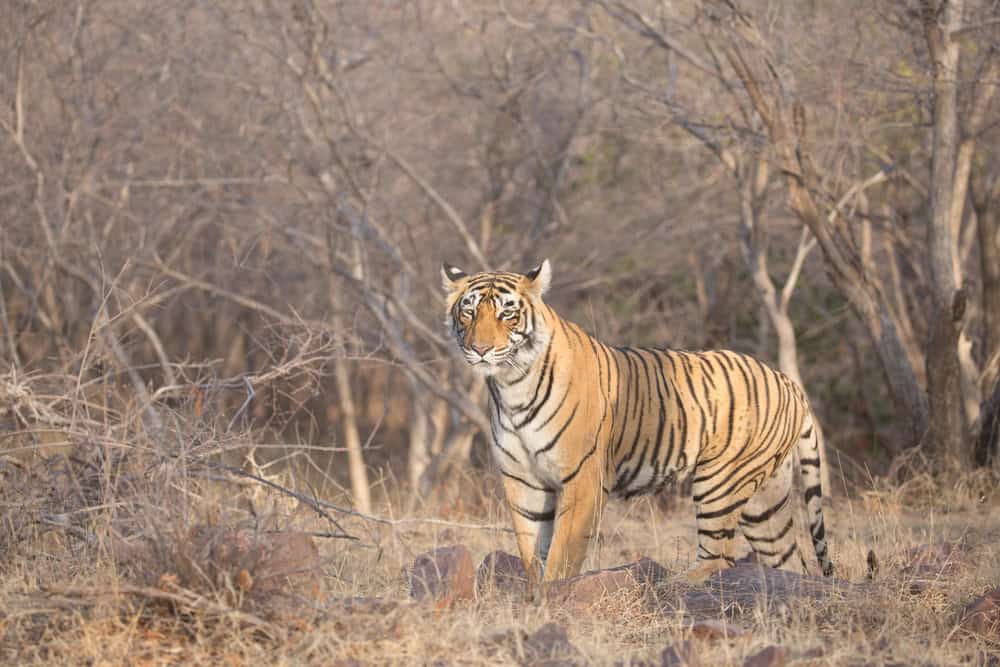
Unlike most cats, tigers are excellent swimmers and enjoy spending time in the water. They can swim for several miles and have been known to chase prey into the water or cross rivers in search of food.
4. Solitary Hunters
 calc(100vw – 40px), 720px” data-pin-description=”Tiger hidden in lake grass” data-pin-title=”A Closer Examination: Orangutan Babysits Tiger Cubs” /></picture>Tiger hidden in lake grass. Image via Depositphotos.<br />
Tigers are solitary animals and prefer to hunt alone. They rely on their stealth and strength to ambush prey, often leaping distances of up to 30 feet to catch their target.</p>
<h2 class=) 5. Strong Jaw and Teeth
5. Strong Jaw and Teeth
Tiger from Asia. Image via Depositphotos.
A tiger’s jaw strength and sharp teeth are crucial for their survival, allowing them to take down and eat large prey. Their canines can measure up to 3 inches long, designed to sever the spinal cord of their prey.
6. Large Territories
Indian tiger female. Image via Depositphotos.
Tigers have large territories that they mark with scent markings and vocalizations. Male tigers have larger territories than females and will fiercely defend their range from other males.
7. Conservation Status
Tigers are listed as endangered due to habitat loss, poaching, and human-wildlife conflict. There are only around 3,900 tigers left in the wild, making conservation efforts critical for their survival.
8. Vocal Communication
Tigers communicate using a variety of vocalizations, including roars, growls, and chuffing. Roaring helps them establish territory and communicate with other tigers over long distances, with their roars being heard up to 2 miles away.
FAQs About Tigers
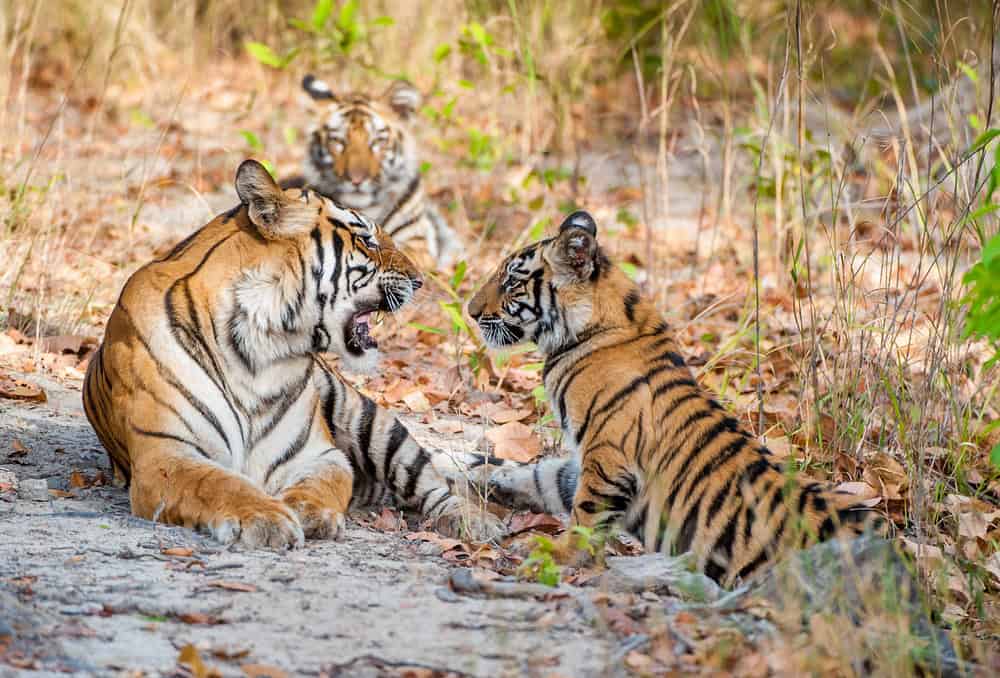
Tigers are fascinating and majestic creatures, often known for their striking appearance and powerful presence in the wild. Here are some frequently asked questions about these incredible big cats.
What are the main subspecies of tigers?

There are six main subspecies of tigers: Bengal, Indochinese, Malayan, Siberian (Amur), South China, and Sumatran tigers.
Where do tigers live?
 calc(100vw – 40px), 720px” data-pin-description=”tigers” data-pin-title=”A Closer Examination: Orangutan Babysits Tiger Cubs” /></picture>The Siberian tiger (Panthera tigris altaica) is the biggest cat in the world. Image via Depositphotos</p>
<p>Tigers primarily live in a range of habitats across Asia, including dense forests, mangrove swamps, grasslands, and savannas.</p>
<h2 class=) What do tigers eat?
What do tigers eat?
Bengal tiger. Chinese New Year 2022 simbol. Beautiful bengal tigers at zoo. Image via Depositphotos.
Tigers are carnivores, primarily feeding on large prey such as deer, wild boar, and buffalo, but they can also hunt smaller animals when necessary.
How long do tigers live?

In the wild, tigers typically live for about 10-15 years, while in captivity, they can live up to 20-25 years due to better medical care and regular feeding.
Are tigers endangered?

Yes, tigers are considered endangered due to habitat loss, poaching, and conflicts with humans. Conservation efforts are ongoing to protect and preserve their populations.
How do tigers communicate?
Tigers communicate through vocalizations such as roars, growls, and chuffing, as well as through scent markings and visual signals like body language and facial expressions.
How strong are tigers?
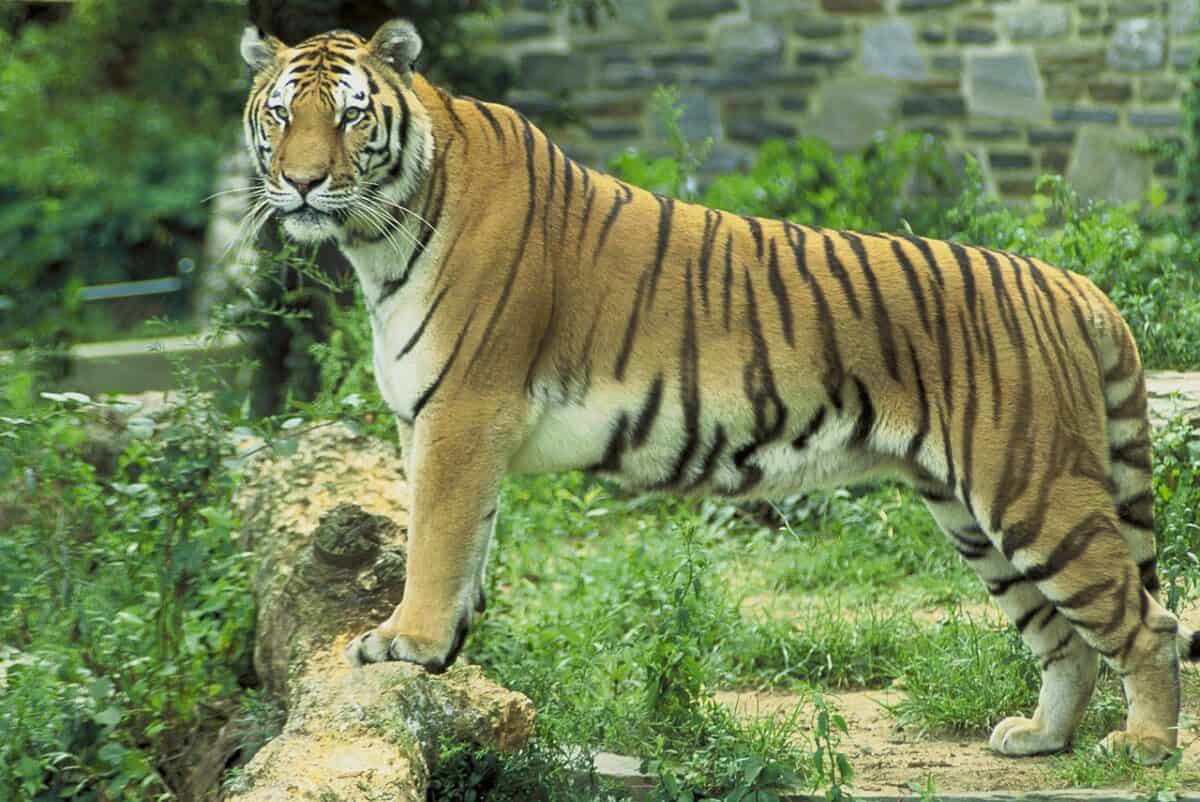
Tigers are incredibly strong and powerful animals, capable of taking down prey larger than themselves. Their strength, agility, and sharp claws make them formidable hunters.

